Trend recognition is one of the most important basics on the path to professional trading. Trend recognition is not that difficult if you stick to certain rules. In this post, we'll show you how to become a pro at identifying trends.
Step 1: Identify Highs and Lows
First, you need to define and mark the highs and lows in the market. A high is always between a price increase and a price fall. The same goes for lows in reverse. The following figure shows an example of how highs and lows could look in a chart. It takes some practice to properly identify the relevant highs and lows in the chart. Over time, you will develop a sense of which highs and lows are significant.
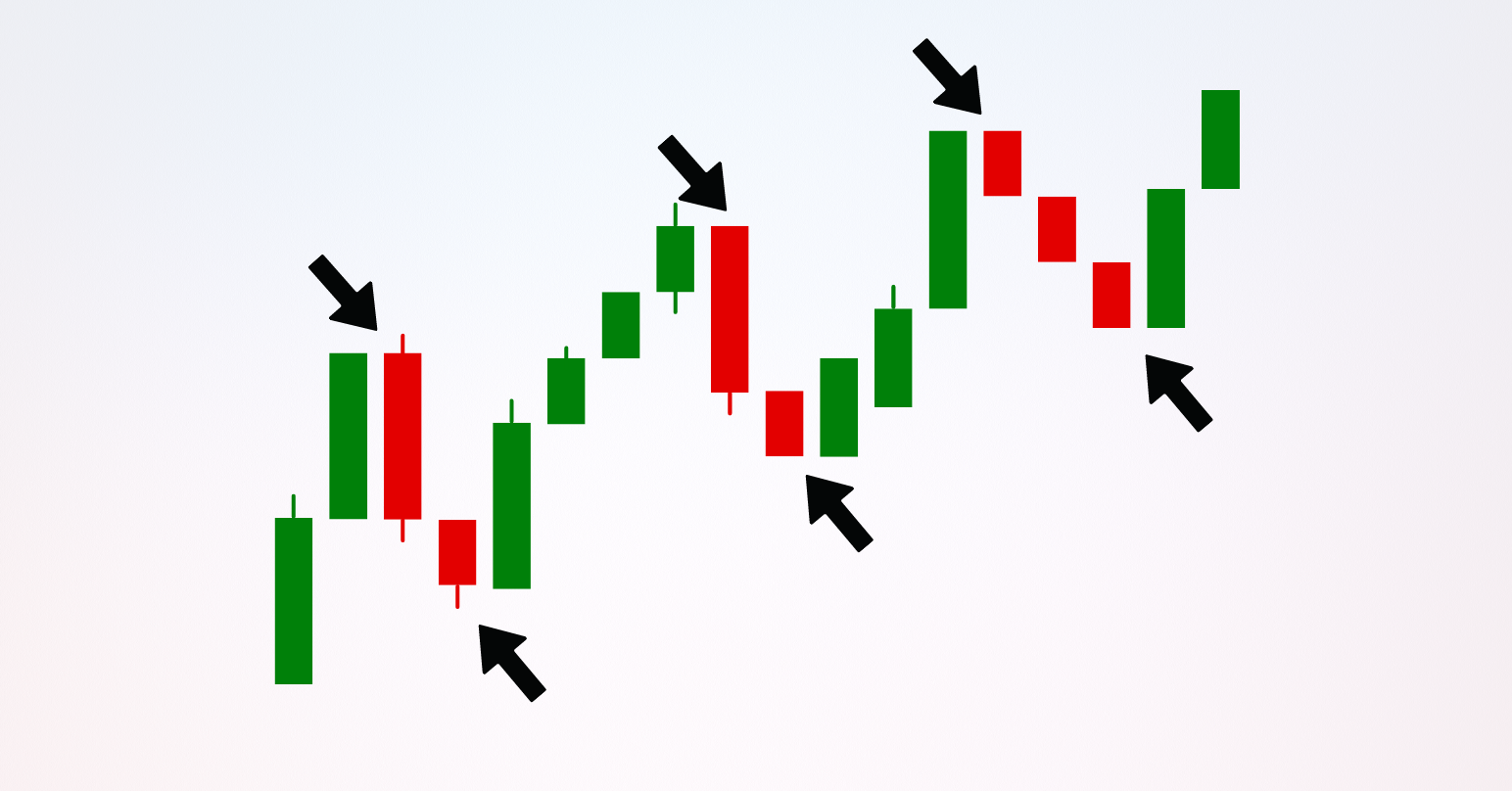
The first step in trend recognition is to mark the clearly recognizable highs and lows
Step 2: Draw Swings
In the next step, you take the highs and lows marked in the previous step and connect them. Voilà: you have drawn swings. With the swings, we now have the first indication of which trend phase this stock is currently in. With the drawn swings, we have structured the chart somewhat and brought some clarity to it. In the next step, we will discuss the exact rules for determining the trend
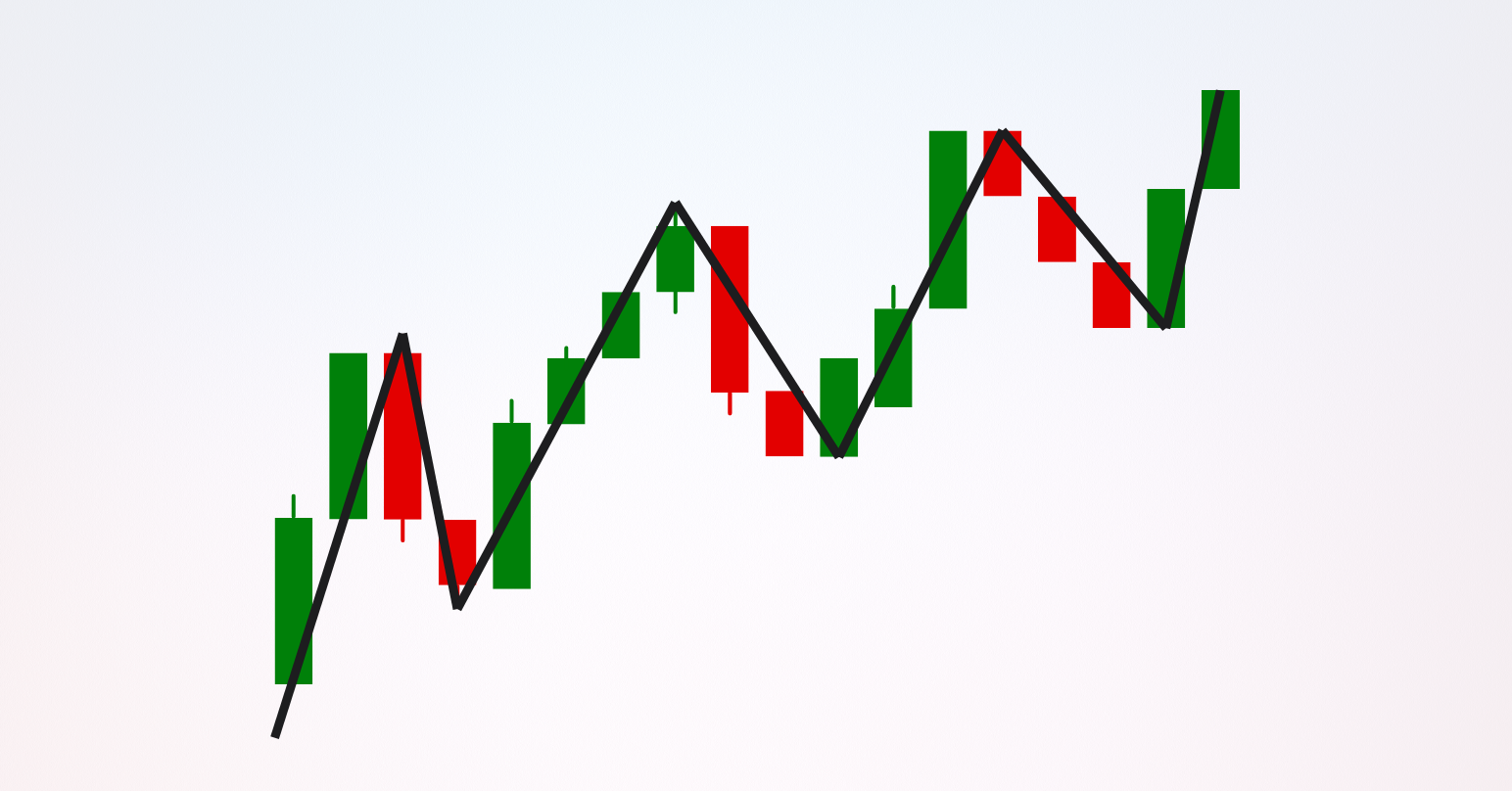
In the second step, you connect the defined highs and lows with lines to create swings
In the example shown, you can see a clear uptrend, as the swings always rise higher. To bring even more clarity, you can do the following: You mark the highs and lows from before again. However, they are now called higher highs and higher lows in an uptrend and lower lows and lower highs in a downtrend. Because not every high is the same high. Only in the context of previous candles does it become clear whether this high is higher or lower.
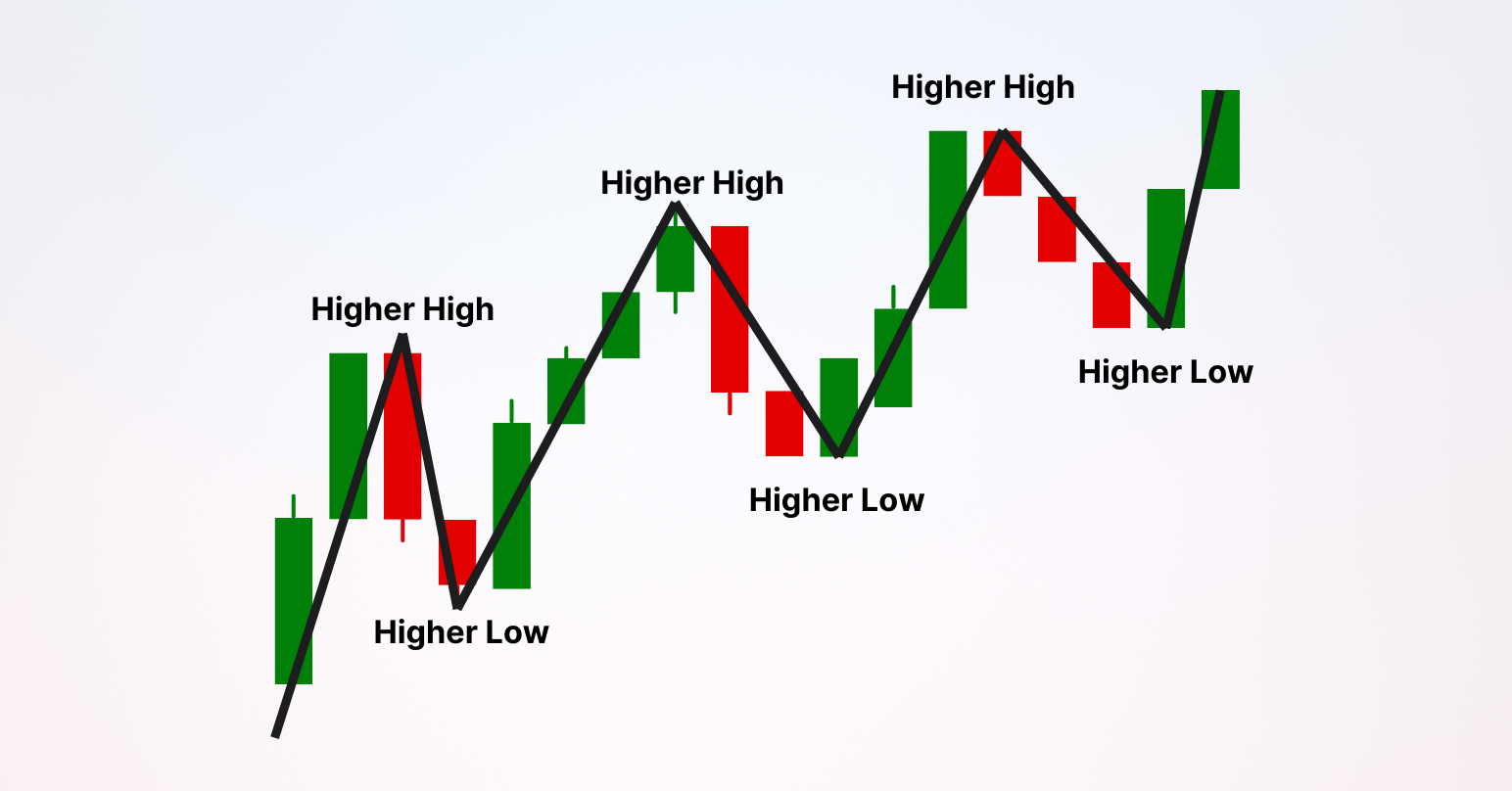
Highs and lows are not the same highs and lows. They can always be set in relation to others, so there are either higher or lower highs and lows
Step 3: The Rules of Trend Recognition
Rule 1:
Now we move away from the visual and define the rules for trends! First, take a look at the higher highs: These not only form a high, but also a resistance in the trend. In the figures, you can always see a developed trend. However, if the trend is just beginning, the price must first overcome this level. That means in an uptrend, the last high, specifically, the higher high, must be broken, and the price must close above it.
Closing above it is particularly important. Because only if the price closes above the resistance, the uptrend is confirmed. To accomplish this, take a look at the next figure. The pink line marks our higher high and, at the same time, the level that needs to be overcome. The arrow indicates where this structure was broken. We speak of a break of structure (BOS). If the trend is to remain intact, it must break the structure of the higher high every time and close above it.
Rule 1: The price must break the structure of the last higher high (uptrend) and close above it to keep the trend intact.
Rule 2:
For the second rule, we look at the higher lows. In an uptrend, it is important that these higher lows are actually higher than the last one. However, this is not entirely correct and leads us to the second rule. In an uptrend, the price may also break the last higher low. But the price must not close below it! If we close below it, the trend is no longer intact. You can see this case in the following figure.
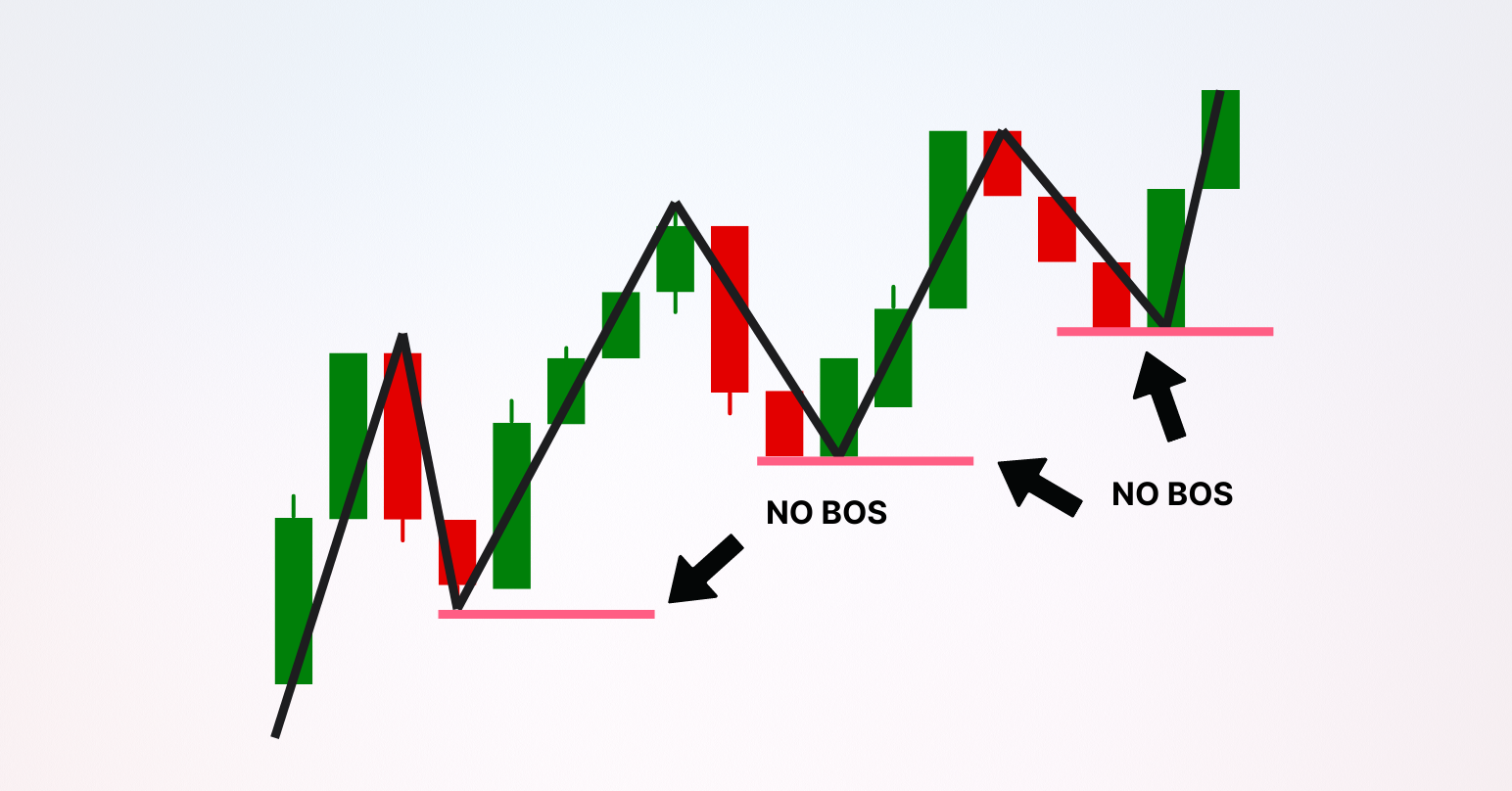
In this example, the structure has not yet been broken (BOS = break of structure)
The price must, therefore, not close below the pink lines. A spike is possible and legitimate, although this does not speak for the strength of the trend.
Rule 2: The price must not close below the last higher low (uptrend). The break of structure does not mean a trend change!
Step 4: Trend Reversal
In the fourth and final step, it is about being able to identify when a trend is broken, or when the trend turns. This case is also referred to as a trend reversal.
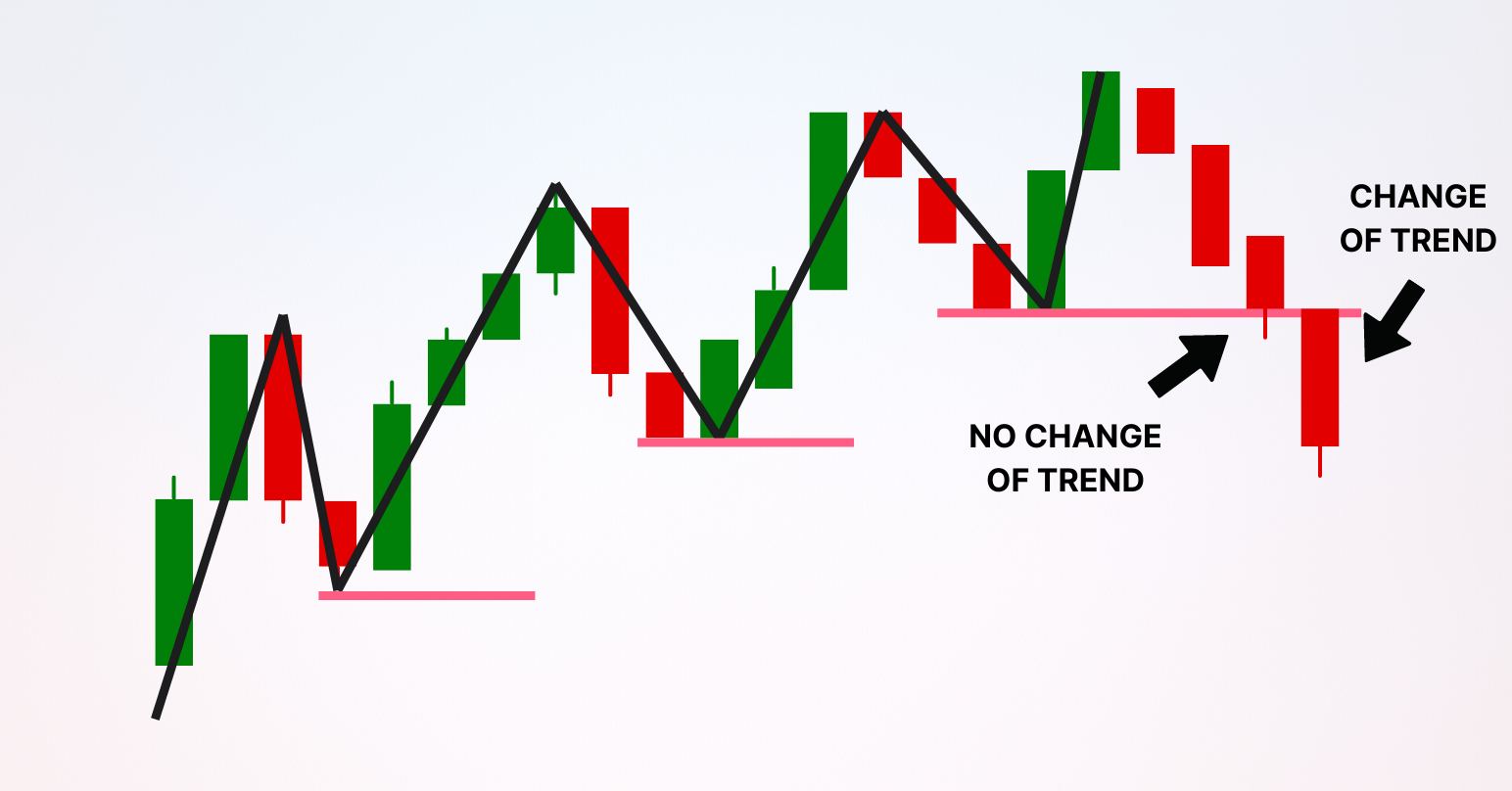
In this case, the structure is really broken, the trend is no longer intact
The left arrow shows the candle where the trend is still intact. Although the price has broken the level, it has not closed below it. Only the right candle closes below the level, thus initiating the trend reversal. If the uptrend is over, the same game starts in the other direction. Here we then look for lower lows and lower highs.